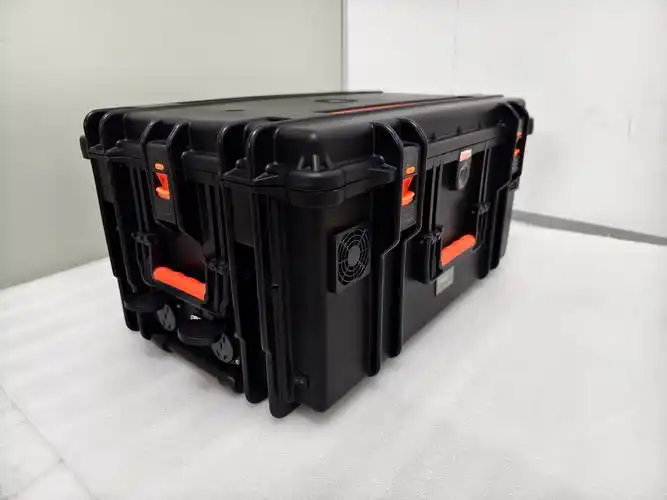 |
Welcome To Evlithium Best Store For Lithium Iron Phosphate (LiFePO4) Battery |
 |

Creating your own solar power station may sound like a daunting task, but it’s surprisingly accessible—even for those without a technical background. With a few essential components and some basic knowledge, you can build a reliable, cost-effective, and modular solar power system that serves your energy needs, whether for off-grid living, emergency backup, or RV camping.
In this guide, we’ll walk you through the full process of building a DIY solar power station for beginners using LiFePO4 batteries, solar panels, and essential electrical components. Let’s explore how you can take control of your own energy with a simple yet effective homemade solar setup.
Before diving into the construction, you’ll need to gather the core components of your solar generator system. Here’s what you’ll need:
Two 12V 100Ah LiFePO4 batteries (1280Wh each)
12V to 220V 1000W pure sine wave inverter
40A MPPT solar charge controller
Two 100W solar panels (expandable to four)
Battery voltage monitor
Heavy-duty alligator clips and 25mm² short cables (M8 connectors)
Fuse protection for safety
Each of these parts plays a crucial role in energy collection, storage, conversion, and usage.
The system can be broken down into three main modules:
This is the heart of your DIY solar generator. It houses one of the two LiFePO4 batteries and connects directly to the inverter and voltage monitor. Its design allows you to easily swap batteries without disassembling the entire setup. Only the battery needs to be transported—not the full system—making it ideal for mobile use.
This component includes your MPPT charge controller and solar panel input. The controller regulates the current and voltage coming from the panels, ensuring safe and efficient charging of your LiFePO4 batteries. It’s flexible enough to charge one battery while the other is in use.
Using heavy-duty alligator clips and short cables, batteries can be hot-swapped in seconds. There’s no need for tools. The modular design means you can upgrade, replace, or expand the system easily as your energy needs grow.
Lithium iron phosphate (LiFePO4) batteries are the preferred choice for DIY solar setups, and for good reason:
Built-in Battery Management System (BMS) for overcharge, over-discharge, and thermal protection
Long lifespan, with over 2000+ charge cycles
Safe chemistry—LiFePO4 is non-flammable and stable under high temperatures
Lightweight and compact compared to traditional lead-acid batteries
For this build, Redodo (also known as Zooms) batteries were chosen due to their excellent reviews and cost-performance ratio.
While DIY projects can raise safety concerns, this solar power station was built with multiple safety layers:
Fuses installed at critical points in the wiring to prevent overcurrent
Low-voltage system (12V DC) ensures it’s safe to touch and reduces electrical shock risk
220V AC output is isolated within the inverter casing to minimize danger
LiFePO4 batteries with internal BMS offer added thermal and circuit protection
The total system weighs around 14kg (30.8 lbs), making it fairly lightweight for a 1280Wh capacity unit.
One of the best things about building your own solar generator is how easily scalable it is. You can add:
Additional solar panels to increase charging speed
More batteries to extend usage time
A second power station box for parallel systems
DC ports for powering 12V appliances directly (perfect for RVs, campers, and boats)
Need to charge batteries from the grid during cloudy days? No problem. Just connect a standard 12V LiFePO4-compatible battery charger and you’re good to go.
Pre-built solar power stations are convenient but expensive. By going the DIY route, you save significantly by:
Purchasing components individually at competitive prices
Avoiding brand markups on plug-and-play systems
Only buying what you need, based on your energy requirements
In this build, a 1000W inverter is more than enough for light household or camping use. But if you only need 500W, you can further cut costs by using a smaller inverter and thinner cables.
Building your own solar power station isn’t just a fun project—it’s a smart investment in energy independence. Whether you're preparing for emergencies, powering an off-grid cabin, or upgrading your RV setup, this beginner-friendly system offers modularity, affordability, and flexibility.
With LiFePO4 battery technology, solar charging capabilities, and swappable components, you can tailor this system to meet your evolving energy needs. And best of all, you don't need to be an electrician to build one.
So go ahead—harness the sun, power your lifestyle, and enjoy the freedom of a self-built solar generator.
Edit by paco
All Rights reserved © 2025 Evlithium Limited